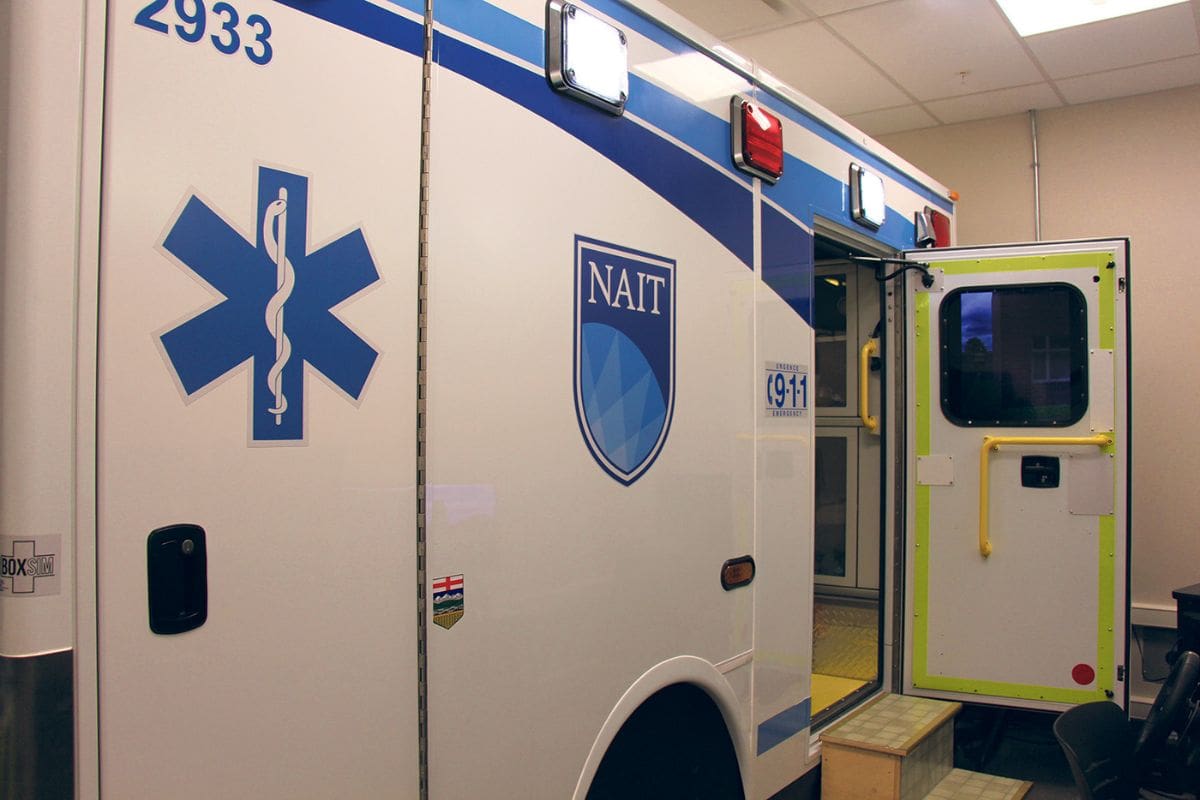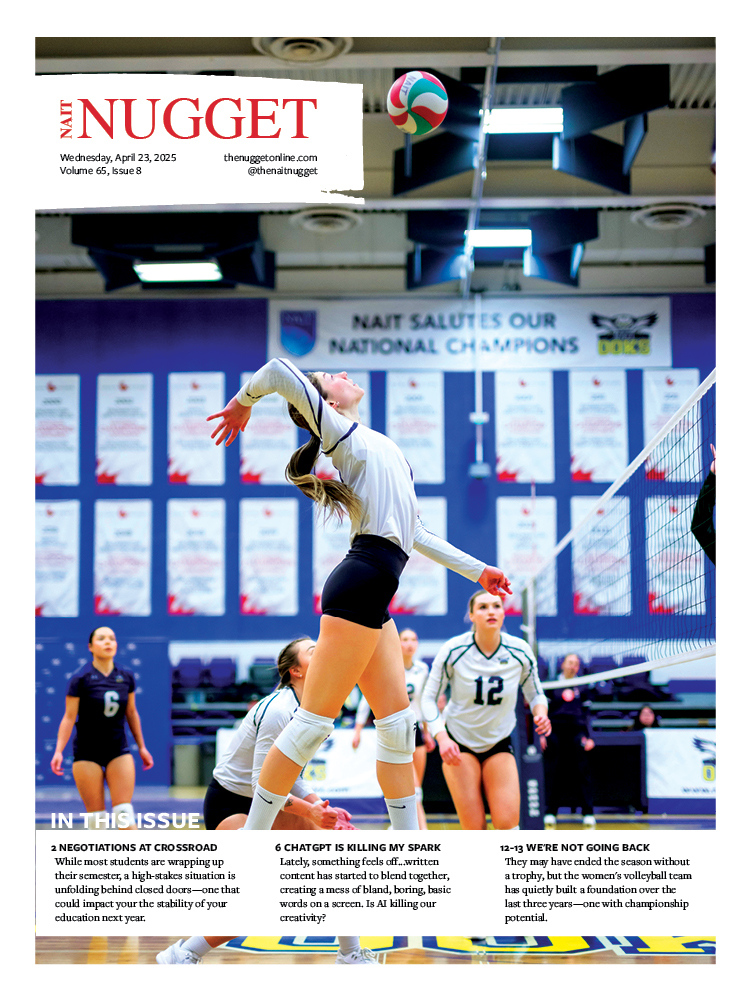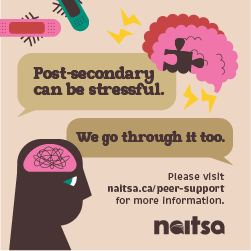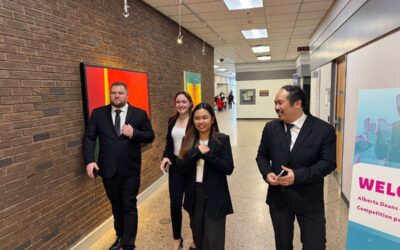“I’m going to f***ing kill you once I’m free!” screams the patient. He thrashes in his hospital bed, violently, likely under the influence of drugs. One NAIT student tries to talk him down while another takes a reading on an instrument. The man is uncooperative, and the duress shows on the student’s face. The textbook made this procedure seem simple. Nothing in their earlier training prepared them for the verbal whiplash of a violent patient. Meanwhile, an instructor watches silently from a nearby control room, observing everything on a wall of camera feeds and taking notes.
After all, this is just a simulation.
Welcome to the Center for Advanced Medical Simulation—better known as CAMS—NAIT’s little-known, but most intense classroom, tucked away behind an unassuming hallway in the CAT building. CAMS is the only facility of its kind in Canada offering health sciences students real-world exposure without real-world risk. The violent patient? A trained actor. The hospital room? One of a dozen dynamic sets. The simulation? One of countless scenarios carefully crafted by a team of learning experts.
CAMS is to health students what the auto shop is to mechanics—a hands-on training ground. The facility has been jokingly described by staff as a movie studio, where sets transform multiple times a day. It’s 6000 square feet, with over 40,000 logged hours of simulation time. CAMS is one of four facilities in Canada to receive accreditation from the Society for Simulation in Healthcare.
There’s a backstage prep room for actors, a miniature workshop to craft silicone wounds and fake blood and a storeroom filled with animatronic mannequins. A hydraulic ambulance platform shakes paramedics into motion—imagine performing CPR while riding a mechanical bull. A high-end driving simulator throws unpredictable traffic situations at students.

And in the extended reality space, 360° projectors, synchronized lighting, and even scent machines create a 4D sensory experience.
“When done correctly, simulation can be incredibly valuable,” said Emilio Violato, a Research Associate at CAMS. “High quality simulation can actually offer advantages, like improving interprofessional collaboration and communication.”
The centre is extremely flexible—and busy. In under 30 minutes, entire theatre rooms can be flipped into new scenarios. Nearly 100 students move through CAMS daily—thousands each semester. Cameras and microphones line every space, capturing every angle and word. Think reality television, but with a clinical purpose. Every simulation is observed, recorded and debriefed. Like an assembly line, students go in as learners and emerge as more confident, competent practitioners.
Tom Waring, the Lead Simulation Technologist, explained that the room is typically set up as a standard operating room, with equipment students will encounter in the workplace like live oxygen, suction and everything they’d see in a hospital. But for certain scenarios, they have the flexibility to change scenes as needed.
“In this space before, we’ve had a pub, sports bar type set up, with paramedics responding, broken glass, liquor all over, things like that,” he explained. Even students pitch simulation ideas, some worthy of a primetime medical drama.
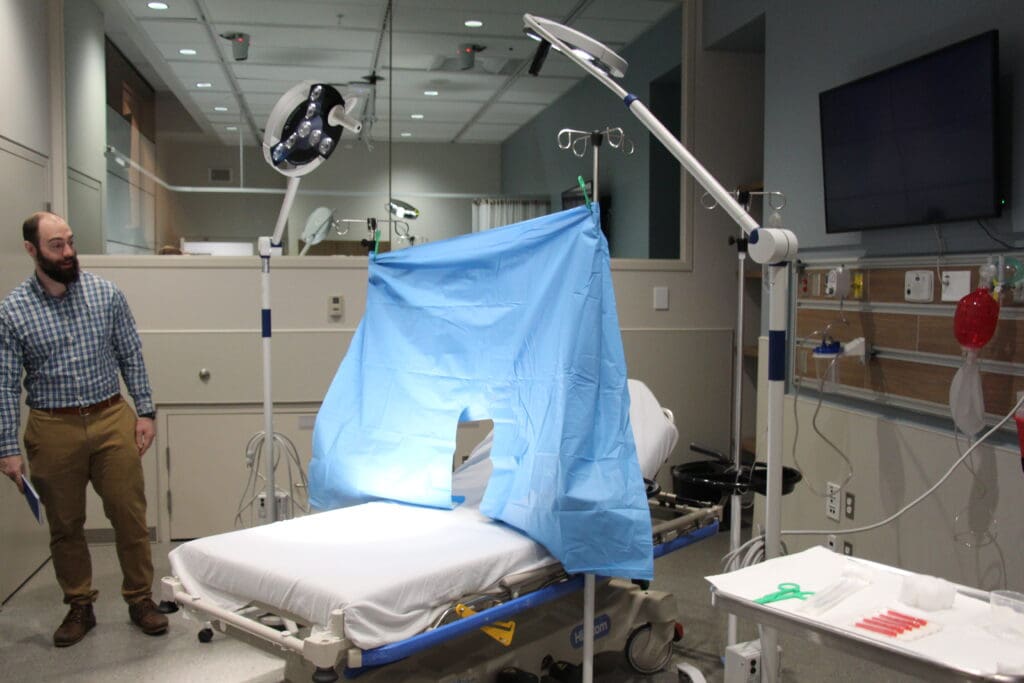
Behind the scenes is a team of specialists: operations managers, learning scientists, biomedical engineers and multimedia experts. They work with instructors and industry partners to create leading-edge training experiences to prepare healthcare students for anything. Simulations are designed to be unpredictable, but learning is always at the forefront of everyone’s mind.
“If it’s a student’s first time coming in, we’re not going to have a super high-stress environment…it’ll be a negative learning experience,” said Efrem Violato, a Research Associate at CAMS. “They might not like [simulations] or ever want to come back.”
Before CAMS opened in 2016, students had to rely on theory and horror stories from instructors. Carolyn Kincaide, the Operations Manager at CAMS, took Dental Technology at NAIT “a long time ago.”
“We practiced on each other,” she shared. “The first time interacting with a real patient happened out in the wild, as a professional, and so, the shock factor is real.”
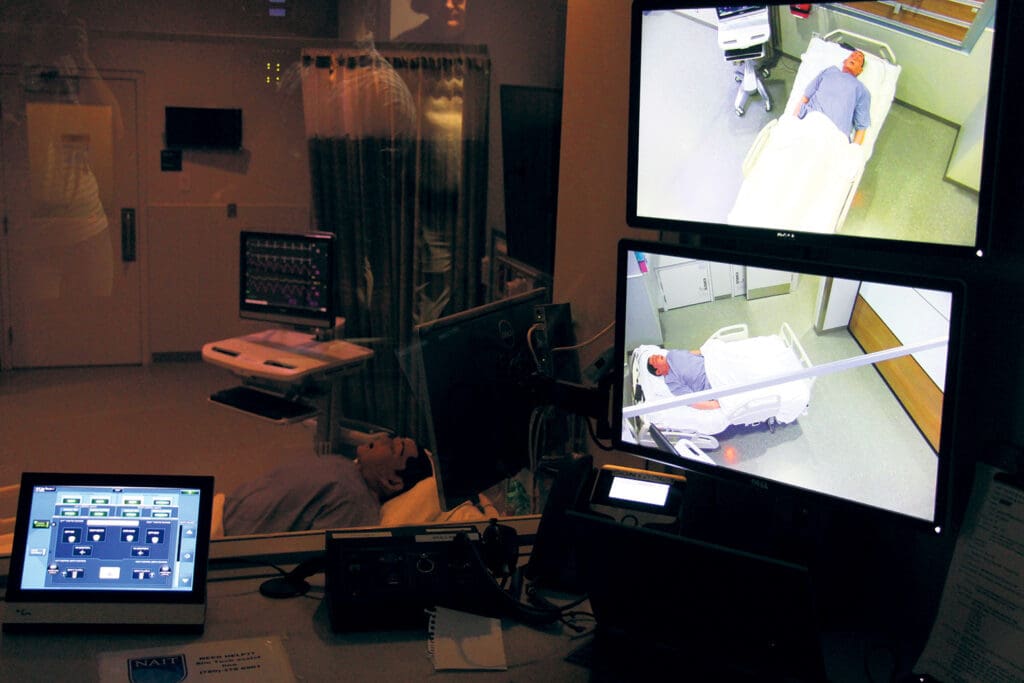
“The fact that the students get to do that for practice safely here means that we have better healthcare professionals out there, who are better equipped to deal with patients.”
After practicing, students can review their own simulations, watching how they respond, decide and communicate under pressure. The team also incorporates patient stories, designing simulations to promote cultural sensitivity, accessibility and trauma-informed care. They continually adjust scenarios to reflect real-world diversity, preparing students not just to treat illness, but to understand the people behind it.
“We include patient partners in a lot of the curriculum. They share lived experiences in the healthcare system, helping students understand how their words and actions can impact someone’s care journey,” the Associate Chair of Interprofessional Education, Lisa George, told the Nugget.
CAMS also collaborates outside the School of Health and Life Sciences. Students from Mechanical Engineering Technology and Digital Media and IT have used the simulation space and engaged in projects with CAMS. The team is always open to new ideas—especially from outside the health sciences. External clients, from police and military to hospitals and manufacturers have worked with CAMS for a variety of projects. Some approached to test new equipment, and others sought custom training programs.
CAMS is a world-class facility training the next wave of healthcare professionals—not through lectures, but through repetition, realism and reflection. By the time NAIT’s students meet their first real patient, they’ve already faced chaos, challenge, and pressure—right here, in the theatres of CAMS.
This article originally appeared in our April 23 print issue. Read it here.

